|
Printables |
PowerPoints |
Online exercises |
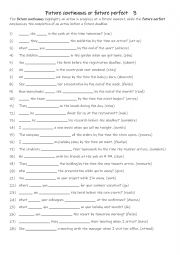
|
A2+-B1 Future continuous or future perfect 3
First, students need to familiarise themselves with the 2 tenses and their use. Then they read the sentences to work out which tense is needed to complete the gap-fill using the infinitive in (). Each tense is used 12 times! Answers on page 2
Level: intermediate
Age: 9-100
Type:
Downloads: 121
|
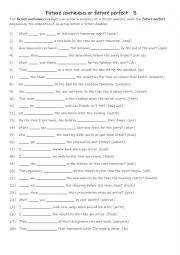
|
A2+-B1 Future continuous or future perfect 3
Understanding these tenses allows students to communicate future goals, schedules, and timelines effectively, enhancing both their speaking and writing skills for academic, professional, and everyday use. First, students need to familiarise themselves with the 2 tenses and their use. Then they read the sentences to work out which tense is needed to...
Level: elementary
Age: 10-100
Type:
Downloads: 110
|
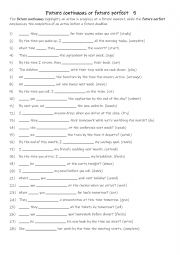
|
A2+-B1 Future continuous or future perfect 5
Understanding these tenses allows students to communicate future goals, schedules, and timelines effectively, enhancing both their speaking and writing skills for academic, professional, and everyday use. First, students need to familiarise themselves with the 2 tenses and their use. Then they read the sentences to work out which tense is needed to...
Level: elementary
Age: 10-100
Type:
Downloads: 143
|
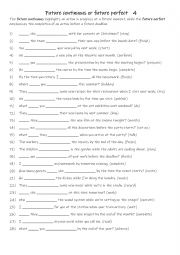
|
A2+-B1 Future continuous or future perfect 4
Understanding these tenses allows students to communicate future goals, schedules, and timelines effectively, enhancing both their speaking and writing skills for academic, professional, and everyday use. First, students need to familiarise themselves with the 2 tenses and their use. Then they read the sentences to work out which tense is needed to...
Level: elementary
Age: 9-100
Type: worksheet
Downloads: 131
|
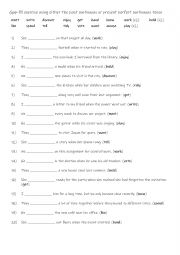
|
A2+-B1 Gap-fill exercise using either the past continuous or present perfect continuous tense
Students read the sentences and complete the gap-fill with either the past continuous or present perfect continuous tense using the key words.Answers on page 2.
Level: intermediate
Age: 10-100
Type:
Downloads: 111
|
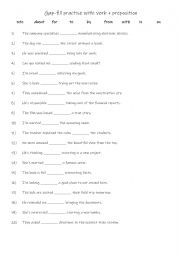
|
A2+-B1 Gap-fill practise with verb + 9 prepositions
The meaning of a verb can change significantly with different prepositions. For example, "run" in "run into trouble" has a different meaning than "run" in "run a business." Mastering these combinations helps learners grasp nuances and use language more accurately.Students complete the gap-fill with a suitable preposition. Answers on page 2.
Level: elementary
Age: 8-100
Type:
Downloads: 118
|
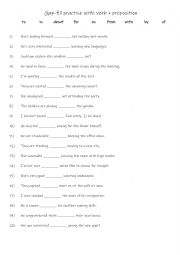
|
A2+-B1 Gap-fill practise with verb + preposition (1)
The gap-fill exercise provided is suitable for A2+-B1 level students. It involves common prepositions and phrases that are often used in everyday contexts, making it appropriate for learners who have a solid grasp of basic grammar and are ready to tackle more nuanced uses of prepositions. Answers on page 2.
Level: intermediate
Age: 10-100
Type:
Downloads: 109
|
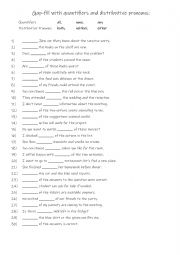
|
A2+-B1 Gap-fill with quantifiers and distributive pronouns
This worksheet gives students this chance to practise using quantifiers and distributive pronouns. In everyday situations, they are used frequently. For example, when shopping, discussing quantities, or distributing tasks, these words help you convey your message more clearly and efficiently.
By learning quantifiers and distributive pronouns, you ...
Level: intermediate
Age: 10-100
Type:
Downloads: 110
|

|
A2+-B1 Gerund or infinitive practise 1
Learning the difference between gerunds and infinitives is essential for achieving accuracy and fluency in English. Gerunds (verbs ending in -ing, like "swimming") and infinitives (the base form with "to," like "to swim") often have specific rules or conventions that dictate their use, which can change the meaning of a sentence. For example, "I sto...
Level: intermediate
Age: 8-100
Type:
Downloads: 114
|
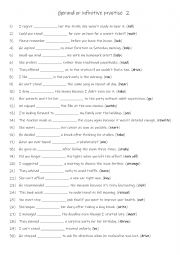
|
A2+-B1 Gerund or infinitive practise 2
Learning the difference between gerunds and infinitives is essential for achieving accuracy and fluency in English. Gerunds (verbs ending in -ing, like "swimming") and infinitives (the base form with "to," like "to swim") often have specific rules or conventions that dictate their use, which can change the meaning of a sentence. For example, "I sto...
Level: intermediate
Age: 9-100
Type:
Downloads: 116
|
|
|
|
|












